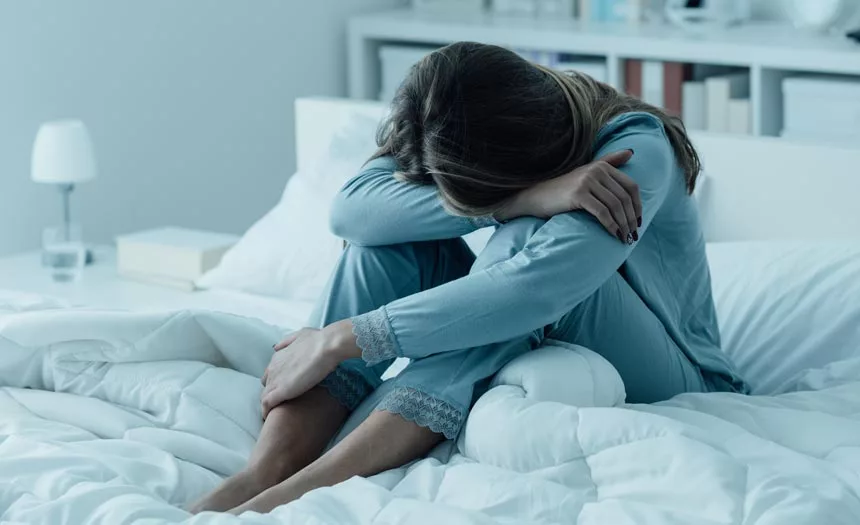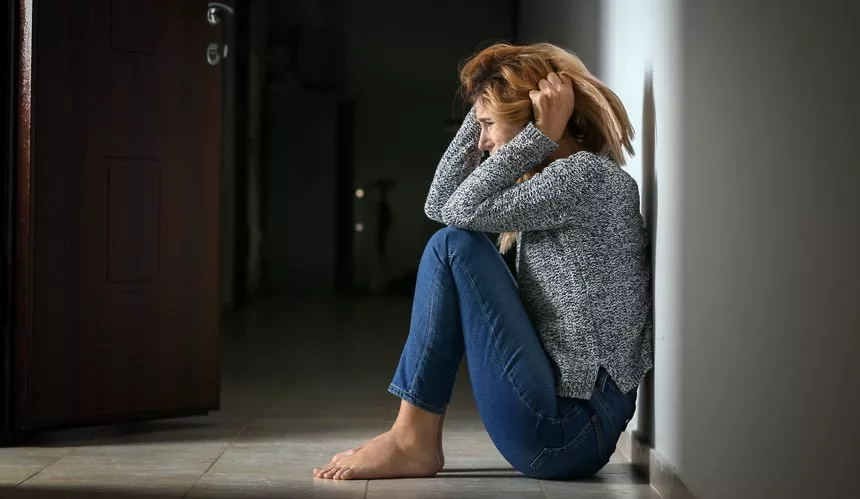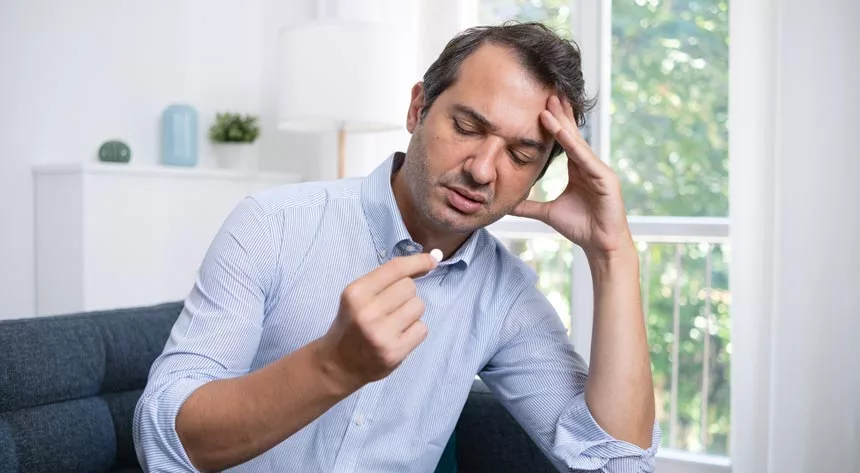When you hear about addiction withdrawal, most people think aboutmeth,cocaine, or even alcohol. Unfortunately, substance abuse withdrawal goes beyond those popular recreational drugs and even applies to medications such as Klonopin. First, Klonopin happens to be an anxiolytic drug that treats seizure disorders (for example, grand mal seizures) and panic disorders.
Klonopin (clonazepam) is a prescription benzodiazepine primarily used to treat seizures and panic disorder. It is in the same category as Valium, which was introduced in the 1960s and became one of the most widely prescribed medications in the US by the end of that decade; at its peak, nearly half of the US population had taken it at some point.
One of the symptoms of anxiety is difficulty falling asleep or staying asleep, so Klonopin can also be prescribed for insomnia. Klonopin is very effective at treating insomnia when prescribed for this purpose, and it has been shown to reduce sleep onset latency (the amount of time it takes to fall asleep) by 50 minutes in some people.
It does this by dulling the body’s functions that are known to cause stress. Though it is made for short-term use, the drug is quite addictive and Klonopin addiction withdrawal can easily occur. Over time regular use will result in physical dependence on the substance. In turn, the withdrawal process can be quite daunting, resulting in severe withdrawal symptoms, whether it involves a dosage reduction or a complete halt.
With that in mind, keep reading to find everything the Klonopin withdrawal process entails.
Klonopin Withdrawal – How Long Does It Last?
Table of Contents
- Klonopin Withdrawal – How Long Does It Last?
- The Symptoms of Klonopin Withdrawal
- Klonopin Withdrawal Timeline
- The Importance of Monitoring Withdrawal Symptoms
- What Sort of Treatment is Offered for Klonopin Addiction?
- What Makes Addiction Treatment Effective?
- Klonopin Addiction Withdrawal Management: Effective Measures
- Your Roadmap to Recovery is Waiting
- Relief from Klonopin Dependence: Found Here
Any withdrawal process is expected to be hard and tedious. The same logic stands when it comes to Klonopin. Before thinking about Klonopin withdrawal duration, there should be a feasibleKlonopin withdrawal schedulein place. Even more, the process should be structured and well-mapped out to ensure it is as comfortable as possible.
Substance abuse creates not only physical dependence but can also manifest psychological symptoms. Uncomfortable withdrawal symptoms are common. Occasionally, a person may experience mild withdrawal symptoms. Regardless of if one were to quit cold turkey or try to engage in the tapering process to their usage, withdrawal syndrome is unavoidable for any type of drug addiction.
Let us start by saying that severe withdrawal symptoms vary from one person to the other. There are a number of factors that determine how long the whole withdrawal period will last and we will try to get you through the most common.
Extent of abuse
You cannot expect someone who has developed a substance abuse habit with Klonopin for a few months to have the same experience as someone with years of drug abuse. This may not be the golden rule when it comes to withdrawal but consider this. People who have been struggling with Klonopin addiction for a while are more likely to develop a tolerance over time.
In relation to the tolerance level spiking every now and then, an avid user would most likely up their Klonopin dose to ensure they still experience the effects of Klonopin. Needless to say, with such a high dependency and tolerance, it would probably take longer to get through the withdrawal stage of quitting Klonopin.
Dosage levels
This works hand-in-hand with the extent of the substance abuse. In fact, in a Venn diagram, these two would definitely overlap. Simply applying the same logic used above, the higher the prescribed or un-prescribed dose, the lengthier the withdrawal stage. In the case that the body is accustomed to high levels of Klonopin, quitting will be more tedious.
Klonopin isn’t like caffeine that most people can wean themselves off regardless of the amount they consume. The way people experience withdrawal symptoms is often slower and more calculated, even more so for heavy users who have to contend with some of the more major withdrawal symptoms. Even more, the dosage equally affects the severity of theKlonopin withdrawal symptoms, cold turkeyor otherwise. Altogether, dosage levels should be considered when drawing up a withdrawal schedule.
Existing medical and mental health issues
It is not unheard of for individuals going through the withdrawal process to haveunderlying medical issues. In fact, some of these issues may be what led to them receiving a Klonopin prescription in the first place. It gets a little more complicated when the patients involved have pre-existing medical conditions.
This is because the individual would not only be dealing with the symptoms of withdrawal, but also the way they affect or overlap with the treatment of other medical conditions. With this in mind, theKlonopin withdrawal durationmay take a while longer to ensure that they can treat the other conditions in tandem.
When it comes to individuals under this umbrella, Klonopin withdrawal should be approached delicately. It should also be under the close supervision of a medical professional. A professional treatment provider has the knowledge of clinical psychopharmacology required to safely guide persons through the serious Klonopin withdrawal symptoms associated with the treatment process.
Biological differences
Some people can gulp down a bottle of vodka and still function while a sip can wreck the next person. In the same way, people are simply different and can get through the withdrawal process faster.
Some other factors that affect the duration of withdrawal from Klonopin are as follows:
- The additional use of other drugs
- Age
- Overall health
- Past experiences with withdrawal complications
- Environmental factors
The Symptoms of Klonopin Withdrawal

Klonopin withdrawal symptoms are serious, in fact, they can be life-threatening. Nevertheless, there are two tiers of symptoms involved. There are what most consider mild symptoms, then there are the more severe symptoms. Before jumping into the withdrawal symptoms here is the reason why people experience these symptoms in the first place.
Although this drug has been FDA-approved for the treatment of anxiety disorders, it is also frequently abused as a recreational drug. As with other benzodiazepines, individuals who abuse Klonopin tend to develop a tolerance to the substance and often experience withdrawal symptoms when they stop using it.
When taken for a given period of time, Klonopin affects chemical changes in the brain. What happens is that some parts of the brain get accustomed to the effect of the drug. As such, they find it difficult to work optimally without Klonopin. It is at that stage that drug dependency has occurred.
When someone decides to stop taking Klonopin, they first need to taper off of it under medical supervision. This is because the withdrawal can be very unpleasant, and withdrawal symptoms can lead to relapse if the person stops taking the drug without tapering off of it.
A doctor will slowly decrease their dosage of Klonopin until they have completely stopped using it. In addition, doctors will monitor their patient’s vital signs during this time in order to identify any problems that might arise due to withdrawal.
Taking Klonopin out of the equation will cause adverse consequences. The brain will be abruptly stimulated. Parts of the brain that were suppressed by drugs (and became accustomed to the chemical changes) might stop functioning normally. What’s more, the symptoms Klonopin was keeping under wraps may become more dominant. This is the beginning of the withdrawal from Klonopin.
Withdrawal Symptoms
With all the above in mind, stopping Klonopin has to be a process that involves medical supervision. As mentioned earlier, serious withdrawal symptoms can reach the extent of being deadly. Nevertheless, there are instances where anxiety or a panic disorder gets the upper hand. In that case, most of the symptoms are mainly a result of the fear of the cognitive symptoms of withdrawal.

Here are some common symptoms associated with Klonopin withdrawal.
- Klonopin withdrawal headache
- Abdominal pains
- Extreme tiredness
- Confusion
- Tremors
- Depression
- Nausea
- Dizziness
- Hallucinations
- Suicidal thoughts
- Sweating
- Vomiting
- Panic attacks
- Cravings
- Loss of focus
Advanced symptoms
- Catatonia
- Spiked blood pressure, body temperature, respiratory rate, and heart rate
- Memory loss
- Impaired respiration
- Impaired coordination and motor functions
- Seizures
- Insomnia
- Impaired vision
For the most part, Klonopin-related withdrawal symptoms manifest, physically, mentally, and emotionally. Persons may experience somatic symptoms, as well as gastrointestinal symptoms. The good news is that the mental and emotional symptoms will pass over time, especially under supervision. The physical symptoms have to be closely observed and tackled as they arise.
The symptoms of withdrawal from Klonopin are generally treatable with medications and behavioral therapy. Without treatment, however, you may continue to suffer from anxiety and panic attacks as well as other psychological difficulties after stopping this drug.
Klonopin Withdrawal Timeline
Before seeking answers onhow to get off Klonopin naturally, it is vital to have a clear picture of what the timeline looks like. This is not only about answering the question ‘how long does it take to detox from Klonopin?’It is also about looking at how it will feel at every step of the way.
Let us start by clarifying that Klonopin is categorized as abenzodiazepine(benzo). Typically, all benzo’s present the same symptoms and follow the same withdrawal timelines. Before we delve in, it is important to know beforehand that Klonopin has a long half-life of about 18-50 hours. As such, withdrawal does not kick in until roughly three days after the last dose. That is where we will start our journey along the timeline.
With that in mind, here are the major stages involved in Klonopin addiction treatment and withdrawal.
Early withdrawal
Often referred to as rebound symptoms, these take place once the effects of the last dose wear off. Remember the half-life we referred to earlier, well the withdrawal symptoms are often hinged on it. Let’s take Xanax, which has a half-life of 11 hours. You cannot compare its withdrawal timeline to medication like Klonopin with its 18-50 hour half-life. So, while withdrawal may be a breeze through for someone hooked onXanax, it’s longer for someone on Klonopin.
With that in mind, the early stages of Klonopin withdrawal will most likely feature the symptoms the medication was meant to treat. So, conditions like insomnia, seizures, or anxiety may surface and progress. At this stage, using addiction medicine to alleviate the effects or even drug tapering may ensure that the withdrawal symptoms are not too unbearable.
Acute withdrawal
Unfortunately, the early withdrawal stage is only the beginning of it all. It picks up a few days after the early stage is done and can linger for anything between 5-28 days. Nevertheless, this is not etched in stone as withdrawal symptoms can last for months at a stretch. A bulk of the withdrawal symptoms occur during this phase, so it is the one to push through.
Most people identify this as the most difficult and problematic stage for obvious reasons. It is equally the point of the treatment process that requires the most supervision. Doctors and other professionals need to be on standby to monitor the patient’s condition. They equally need to be there to prescribe other drugs and remedies to keep any serious symptoms at bay.
Protracted or late withdrawal

At this stage, the worse has already been conquered, but there may be a shadow of some of the symptoms present. There is no set timeline on how long the symptoms may span. As mentioned earlier, that is dependent on a number of internal and external factors. With that in mind, it is no surprise that late withdrawal may present its own special set of protracted withdrawal symptoms.
This phase is referred to as post-acute withdrawal syndrome (PAWS). Some notable symptoms are:
- Depression
- Worsened panic disorder
- Depleted libido
- Insomnia
- Anxiety
- Mood swings
- Limited concentration
The best way to withdraw from Klonopin is with the help of a doctor. The doctor will help you by starting you off at a very low dose and slowly decreasing it over time until you are completely off of it. You should already have an idea about the amount of time that you have been taking Klonopin so the withdrawal should take place over the same amount of time that you took the drug.
For example, if you have been taking 2 mg for two years then withdraw over 2 months. The doctor will give you one last dose of Klonopin before you stop taking it completely so that you don’t experience any serious symptoms during withdrawal while still having some medication in your system to help ease the symptoms.
The Importance of Monitoring Withdrawal Symptoms
Even though these symptoms are nothing compared to what is experienced in the acute stage, they should not be ignored. They can go a long way to reducing the quality of life and send an individual down a rabbit hole of other symptoms. That’s why it is vital to employ counseling and support as well as additional medications to ensure that the individual is equipped to brave through it.
Though there is no clear-cut timeline for Klonopin withdrawal, there are estimates of how long it often lasts. Early withdrawal is often short and lingers for about 2-4 days. Meanwhile, Acute withdrawal hits its peak in a fortnight and can go on for anything between a week to months. The late withdrawal symptoms are mostly physiological and they creep up sporadically over the months, or even years, that follow.
Another thing to keep in mind is that not everyone goes through the three stages. As similar as humans are, experiences such as addiction and withdrawal vary from person to person. For instance, the last stage, which is protracted withdrawal is quite rare. It is often not experienced by people withdrawing from benzos with shorter half-lives like Xanax.
Even more, it can be avoided and managed altogether if the individual is subjected to proper mental health treatment and counseling. Nevertheless, these are the three general stages experienced by people tackling benzo withdrawal.
What Sort of Treatment is Offered for Klonopin Addiction?

Klonopin is closely related to other benzodiazepines such as Xanax, Valium, and Ativan. All of these drugs are widely known to be addictive, so much so that a serious drug dependency can develop after just a few weeks of regular use. Though there are no formal studies on Klonopin specifically, we can draw from the research on benzos, in general, to help us understand the nature of Klonopin addiction.
There are several different treatment options for Klonopin addiction, each with its own benefits and drawbacks. When it comes to treatment centers, there are two main types, inpatient and outpatient, which we will now examine.
Inpatient rehab is a form of treatment for individuals suffering from drug and alcohol addiction. The program usually lasts between 30 and 90 days, depending on the severity of the patient’s addiction. Inpatient rehabilitation is cost-effective and has proven to be very effective in treating severe cases of addiction. The patient remains at the facility throughout the duration of the program, with no access to drugs or alcohol.
What Makes Addiction Treatment Effective?
Residents live in a facility with other patients and are constantly monitored by counselors and medical doctors. The goal of inpatient treatment is to treat all physical and mental aspects of addiction. Treatment plans include detoxification, group, and individual therapy sessions, family counseling, relapse prevention education, and more.
Researchers have found that inpatient drug rehab is extremely beneficial for individuals suffering from severe drug addictions. For these individuals, outpatient treatment may not be enough to help break their drug habits completely. Many patients find that traditional outpatient programs do not provide them with the structure they need to stay clean after completing their treatment plan.
Some patients also find that outpatient programs are much more expensive than inpatient treatment options. Inpatient rehabilitation can help stabilize an addict’s cravings while also providing them with the tools they need to avoid future relapses into drug addictions.
Outpatient rehab is a non-hospital treatment option for those addicted to drugs or alcohol. Outpatient rehab provides drug and alcohol addiction treatment services so that the addict can continue to live at home. This is beneficial because it makes it easier for the addicted individual to maintain a healthy relationship with their family, perform well at work, and/or continue with school.
Inpatient vs Outpatient Addiction Treatment
Typically between the two, outpatient treatment tends to be cheaper and more cost-effective. However, it must be noted that while this is an advantage, outpatient treatment may not be intensive enough to yield lasting results. The truth is that rehabilitation is not a one size fits all thing. It must be taken, integrated, and executed on a person-by-person basis.
Now, let’s move on to examining the types of treatment programs and processes that may be employed to help someone suffering from acute withdrawal and addiction to Klonopin kick the habit. The hope is that by employing one or a combination of these treatments, the underlying causes that led to addiction can be addressed.
The first type of treatment is called cognitive behavioral therapy (CBT), which helps addicts recognize their behaviors and learn new ways to react to them. CBT is typically used in combination with medications like antidepressants or antianxiety medication to help patients feel better during the recovery process.
The second type of treatment is called contingency management (CM), which rewards patients for staying sober with small gifts or vouchers. When used in conjunction with other treatments, CM can be very effective at helping addicts stay away from drugs and alcohol.
The most common treatment for Klonopin addiction is medication-assisted therapy (MAT), which involves taking another prescription substance called naltrexone to treat the symptoms of withdrawal from Klonopin. Doctors may sometimes recommend that patients take naltrexone after they have been detoxed from Klonopin, with the purpose of preventing the patient from feeling the euphoria or high associated with taking Klonopin again. Naltrexone is an FDA-approved medication that blocks opioid receptors in the brain.
More and more, holistic therapies are being used as a method of healing persons from addiction. This can include meditation habits, yoga, acupuncture, and more. The bottom line with holistic treatment is to look at the person’s life; the routines, tools, and habits at their disposal that might give them a better chance at staving off the grip their inner demons might have on them.
Klonopin Addiction Withdrawal Management: Effective Measures
By now, a few things should be apparent. Klonopin and benzos as a whole are necessary but highly addictive medications. When it comes to withdrawal and detox, they are often quite difficult to shake off. Nevertheless, the difficulty and duration of the withdrawal process differ from one individual to another.
According to reports from the Office of National Drug Control Policy, Klonopin is among the top 10 most commonly abused prescription drugs. This means that a lot of people out there are at risk of becoming addicted to it. And unfortunately, this is partly because of how legal and easily accessible Klonopin is. This makes it very easy for people to obtain, but they don’t think twice about what they could be getting themselves into by doing so.
There are a number of reasons why someone might need to seek treatment for Klonopin addiction. For example, he or she may not be able to stop using the drug and may be suffering the consequences of an overdose, or struggling with drug-related mental problems such as depression or anxiety. In many cases, Klonopin is used in a manner that is not prescribed by a doctor, which leads to negative side effects and other repercussions. Klonopin abuse can have severe consequences, including decreased cognitive functioning and memory loss.
Those who abuse this drug can experience symptoms like nausea, constipation, blurred vision, confusion, hallucinations, and even seizures. Those who regularly use this drug may also develop psychological problems such as paranoia and an inability to concentrate. Since this drug has the potential for being addictive, those who abuse it often find themselves in trouble with the law, experiencing financial hardship, and health problems that require medical attention.
Chances are that if you are using this medication improperly and/or in excess amounts you will want to stop taking it before these serious problems become realities. In most cases where a person suffers from an addiction to this medication, they will need help in order to stop using it safely; fortunately, there are some options available that can help you successfully discontinue its use without the risk of experiencing withdrawal symptoms.
Your Roadmap to Recovery is Waiting

Fear of life without the medication or the withdrawal process often deters people from seeking addiction treatment to kick the addiction. But in the long run, trying to stop without support becomes more dangerous. Although Klonopin may seem harmless at first, it is easy to be drawn into an addiction that can have serious consequences. If you or someone you know has developed a dependency on Klonopin or any other addictive substance, seeking professional help is the best way to ensure a safe recovery and protect your quality of life.
With this in mind, if you or a family member are battling Klonopin addiction, then there is no time better than now to seek some help from high-quality addiction treatment services.
Rehabs Of Armerica is a top-notch treatment resource, more than equipped to help you locate the top providers of substance abuse treatment. More than ever, the support you have as you go through withdrawal, recovery, and post-acute withdrawal symptoms is vital to your success. Armed with a vast database of treatment facilities, our dedicated team is qualified to pair you with the best center based on your preference and budget. The physical and psychological symptoms of drug addiction are debilitating and support gives you the best chance of overcoming it.
Relief from Klonopin Dependence: Found Here
You can rest assured that all the facilities we have access to are thoroughly vetted and are capable of providing extensive treatment. They are tried and tested, and even offer treatments for pre-existing mental health disorders that are aggravating the addiction.
At the end of the day, you will be fully equipped to function without Klonopin. It may not be an easy process but they are all ready to brave or through every step with you. The panic attacks and rebound anxiety that are part of no longer having the access to the substance are one of the reasons that drug rehab is such a helpful component of recovery and a major driver behind persons seeking addiction treatment from a high-quality treatment provider.
Being addicted to Klonopin or any other benzo is not the end of the road. Allow our well-qualified and dedicated team to lead you through the first steps to your recovery and anything beyond that. The treatment providers found through Rehabs Of Armerica represent a private and convenient solution for substance abuse treatment.
For additional information on the entire process and full details regarding the journey to an addiction-free life, reach out today!
Charles F. has been an active part of the Florida recovery community for over 5 years. He began as a behavioral health technician at an addiction treatment facility in Ocala, Florida and has since begun training as a Licensed Addiction and Chemical Dependency counselor in Boca Raton. Charles’ passion involves the promotion of recovery and helping spread the hope of recovery to as many readers as possible!


